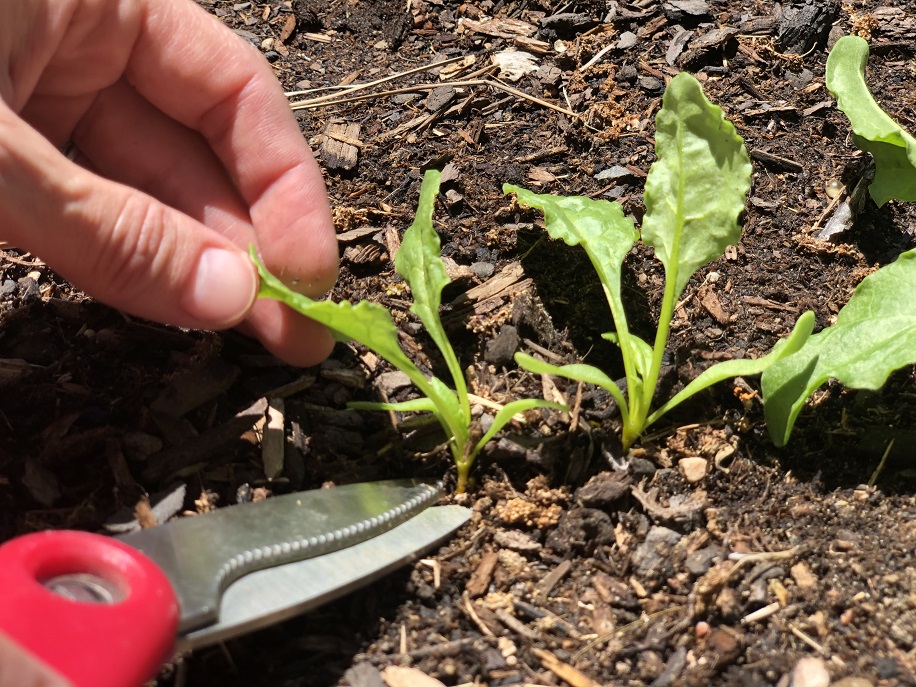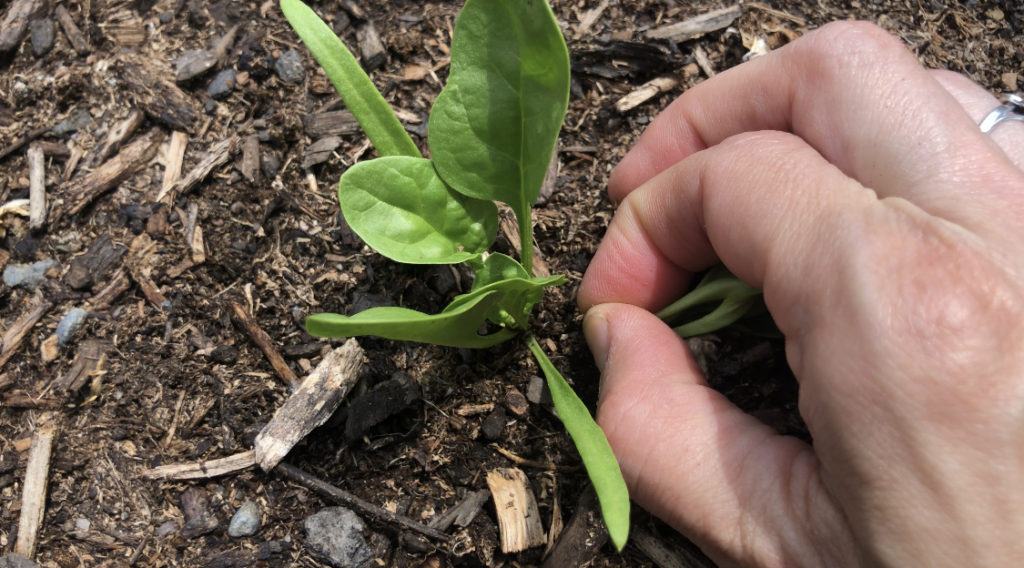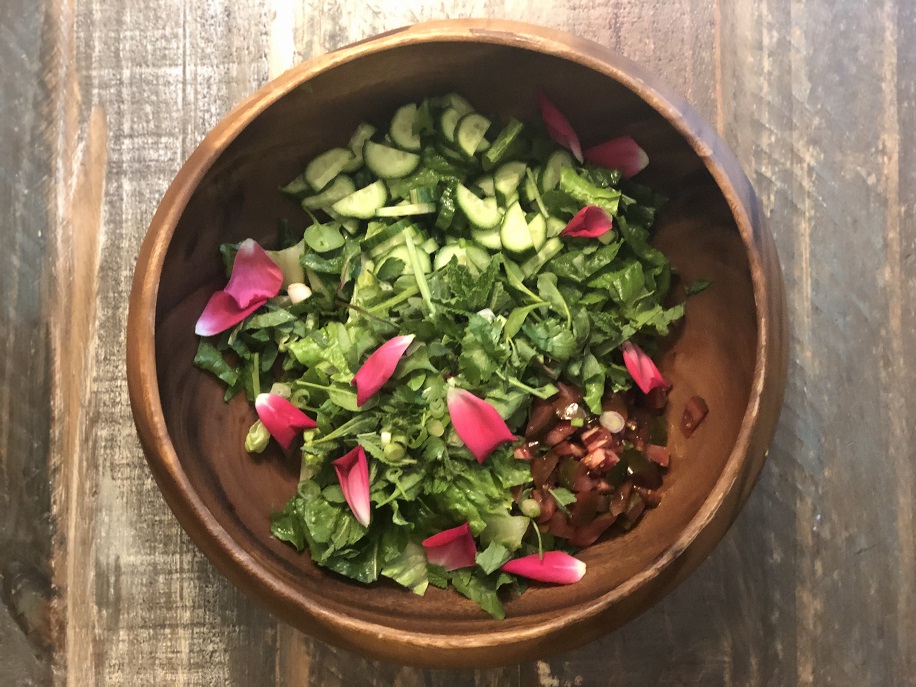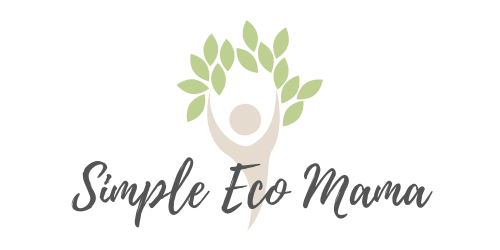My Gardening Journey – How to Thin Seedlings

Thinning seedlings can be tough. It has taken me a while to warm up to the process, even though I know it’s important. I’ve gotten the hang of it now and wanted to share with you what I have learned. This article will explain why thinning seedlings is important, how to thin seedlings, and what you can do with them once they are removed.
Table of Contents
What are thinned seedlings?
They are small newly sprouted plants that are removed from the garden due to overcrowding of too many plants in one space.
Why do I need to thin seedlings?
Seeds are usually planted closer together when first placed in the ground. Gardeners do this because not all seeds will germinate and this will give them a higher success rate for plant growth.
However, if all or most of the seeds do sprout, the plants will be overcrowded and will not be able to grow to their full potential. Thus resulting in the need to thin out or remove some of the newly growing seedlings to give room for the plants who will stay in the ground and grow.
The same goes for seedlings grown indoors. It is recommended to plant 2-3 seeds per pellet or pot. If more than one of these seeds sprout, it is necessary to thin the seedlings down to 1 to allow the plant proper room for growth.

How do I thin seedlings?
The process of thinning seedlings is the same indoors or outdoors and it is to keep the strongest plant and take out those that are smaller or weaker. If all seedlings are left in the pot or garden row, they will end up competing against each other for space and stunt their growth, just as weeds do.
Thin seedlings when they are 2-3 inches tall and have developed 2 sets of true leaves. The first set of leaves you see when the plant begins to sprout are not the true leaves and should not be included in the 2 sets.
Snip the unwanted seedlings right at the soil line so as to not disturb the root system of the healthy growing plant that was kept. There is a thinning section on the back of the seed packet. It will tell you how far apart the plants you are keeping need to be from each other. If thinning seeds indoors, leave 1 plant per pellet or pot.
Can I thin seedlings and replant them?
Yes, it is also optional to separate the indoor seedlings or pull the outdoor seedlings directly out of the ground and transplant them to grow in another location. But this can cause a lot of stress on the plant by disturbing the root system. This process must be done very carefully.
To thin seedlings indoors, remove the peat pellet or the plants from their pot. Gently separate the plants paying close attention to the roots. Try not to pull them apart too quickly but loosen the roots with your fingers as much as possible before separating them. Place them into individual pots and fill them with soil.
To thin seedlings outdoors, place your fingers at the base of the plant you are removing and very very gently pull the plant out of the ground. Replant the seedling in an area that will give it room to grow.

What is the last step when thinning seedlings?
Water your seedlings. Give them a quick pick me up with a fresh drink of water. This step is especially important if you are separating the potted seedlings or pulling them directly from the ground. It will help settle the soil around the roots that may have been disturbed during the thinning process.
After the seedlings have been thinned and watered, your plants will have room to grow strong and provide you with a bountiful harvest.
What can I do with thinned seedlings?
I have always had a hard time thinning seedlings because all the plants look so strong and I want them all to survive. If you have this feeling as well, remember many of these seedlings can be saved and eaten fresh in salads! They are full of nutrition and will give your salad favor as well. You can also saute the seedlings and use them in your meals or add them to your smoothies! Be sure to compost all inedible seedlings.
We made the Seedling Herb Garden Salad with our seedlings. We used our thinned seedlings along with some harvested herbs and rose petals from the garden. It was delicious and super simple to make. For the full recipe and video, click here: Seedling Herb Garden Salad.

What seedlings are edible?
Most of the edible seedlings are those that you normally eat the plant leaves of.
- lettuce
- kale
- spinach
- arugula
- chard
- broccoli
- herbs
- pea shoots
You can also eat the seedlings of many root vegetables.
- radish
- turnip
- carrot
- beet
- fennel
- onion
Thinning seedlings is now an enjoyable process for me that I look forward to. I know I am doing what is best for the surviving plant and I also know that I can use many of the edible seedlings and turn them into a delicious recipe in the kitchen. One more way to get more nutritious healthy food from your garden.
Do you thin seedlings in your home or garden? Please share your experiences below.


Thank you for this post. I have planted our new raised beds and have my seedlings starting to come up. Evidently our soil is good or my seeds were really good because I swear it looks like every seed I planted is spouting. So I know I will need to thin some down. I found this article very helpful and I had NO IDEA I could eat some of the seedlings.
Thank you for your comment. It is so awesome that all of your seeds are sprouting! I hope you are able to use your edible thinned seedlings in a delicious recipe. Try adding them to a salad. That is my favorite way to use them.
I really should thin my seedlings. I planted four chickpeas in a pot the other day. That was my third attempt at growing them (the first time, I went on holidays and they died, the second time, none of them sprouted) and I wasn’t very hopeful. But now all four of them sprouted and there’s no way they’re all going to survive in this pot. But I’m just like you, I find it very hard to remove a seedling because they all look healthy and strong.
Thank you for the reminder that I really need to do that soon, so one plant can survive.
Wow, that’s great! I hope all goes well with your chickpea plant this time around. 🙂